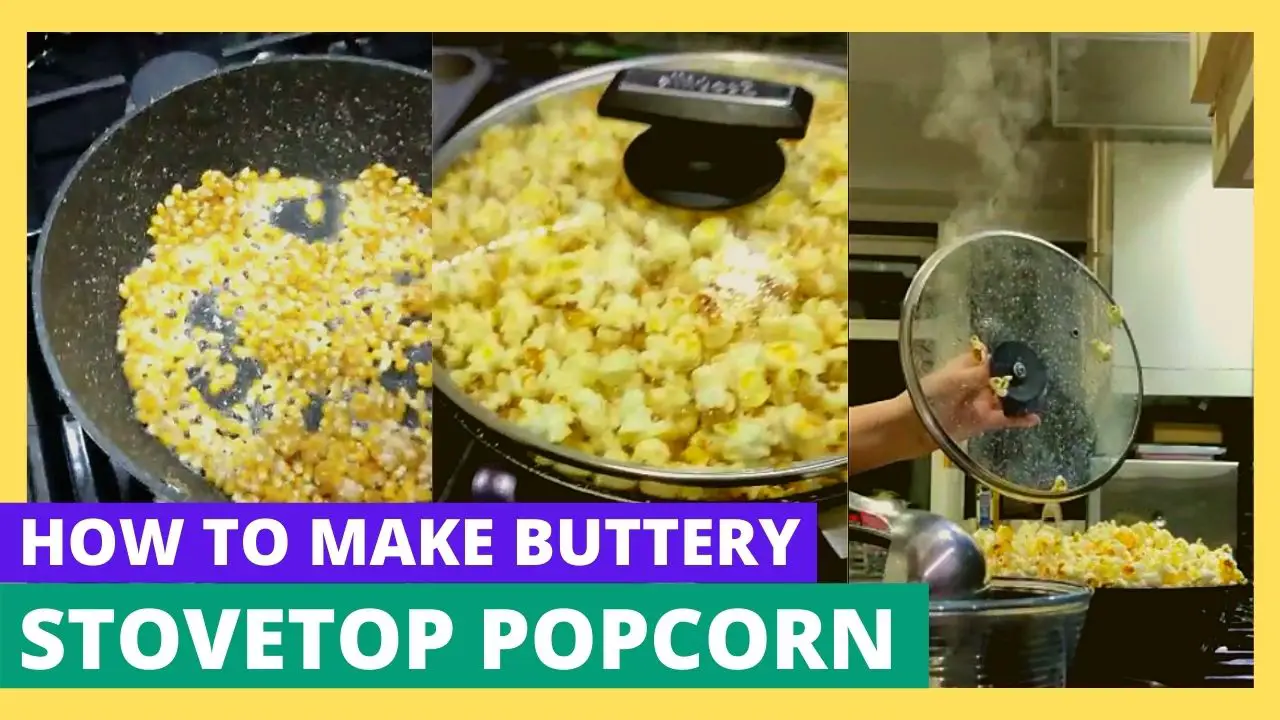Once you have made stovetop popcorn with butter, you will never want to go back to using oil or microwave again. You can literally smell and taste the difference. Although using butter instead of oil is a simple swap, there are a few things to follow so you won’t end up in a kitchen full of smoke.
This butter stovetop method has never failed me—nearly every kernel pops, there is no smoke or burning, and the buttery flavor is distributed perfectly. But to achieve that, it’s essential to understand each aspect, so let’s start with the first thing first.
Best Pot For Stovetop Popcorn
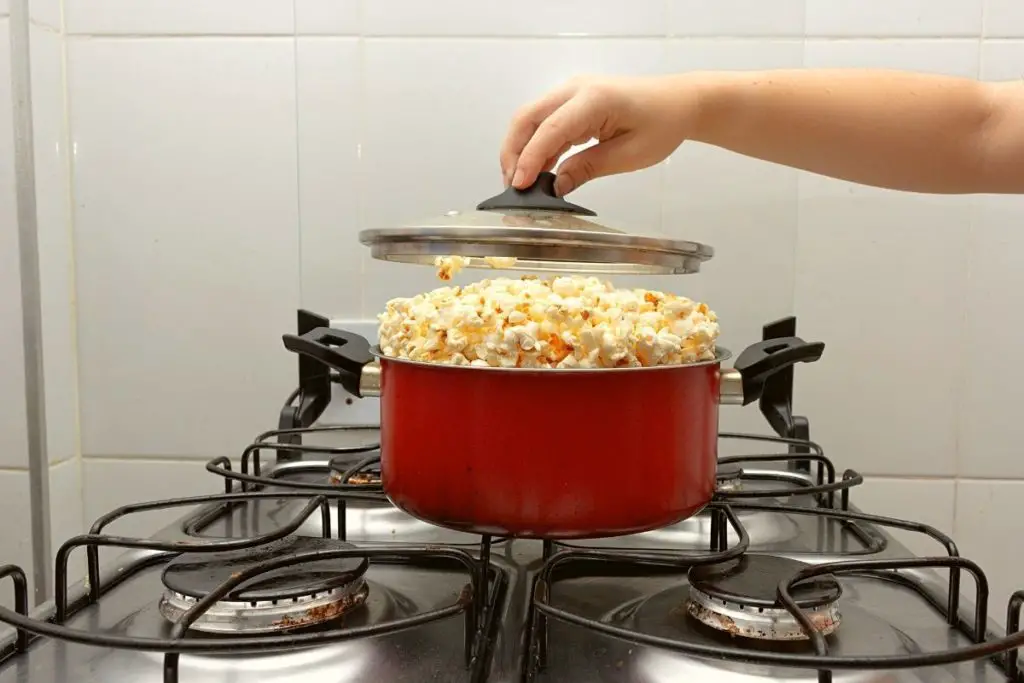
You might feel tempted to grab any old pot you have lying around your kitchen, but some cookware is better than others.
The best stovetop popcorn-popping pots are saucepans, saute pans, heavy-bottomed pots, or Dutch ovens. The pot should be deep with a fitting lid and be tall enough to hold all your popped kernels.
The reasoning is simple—heat distribution. One of the most frustrating aspects of making popcorn on the stove is to have burnt bits and, at the same time, a bunch of kernels that refuse to pop. This is because of uneven heat distribution on the pot surface, which causes some areas to get hotter much faster than others.
Generally, the cheaper the pot, the less likely heat distribution was a concern during the design.
Top Tip: For gas hobs, if you don’t have a heavy-bottomed pot or pan, a heat diffuser can be really helpful. This useful gadget prevents the heat source from hitting your kernels directly and allows for better heat absorption and distribution.
The result? An even cooking process that reaches all kernels equally.
What Are The Best Popcorn Kernels For Stovetop?
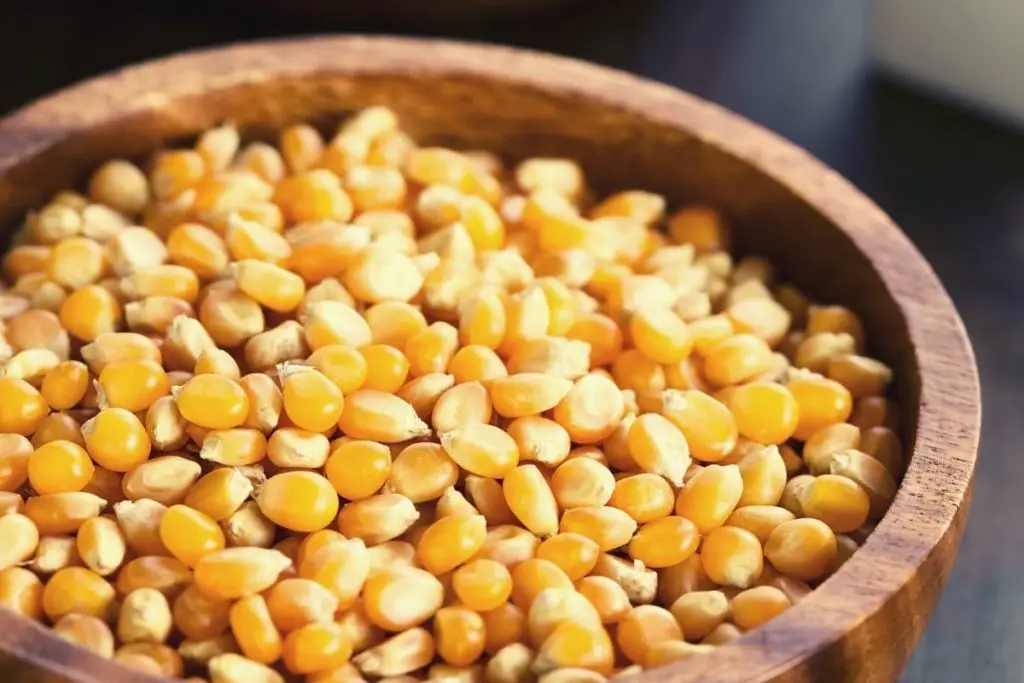
Most store-bought popcorn kernels will pop consistently and easily on the stovetop. A few things to look out for when purchasing kernels are that they are well packed, not close to or past the sell-by date, GMO-free, and don’t have any flavors or additives that you may not like. You can always season your own kernels.
Yes, there are some novelty popcorn kernels that come in different colors and shapes, but the flavor remains more or less the same.
The Perfect Popcorn On Stove Needs Butter—But Not Any Butter
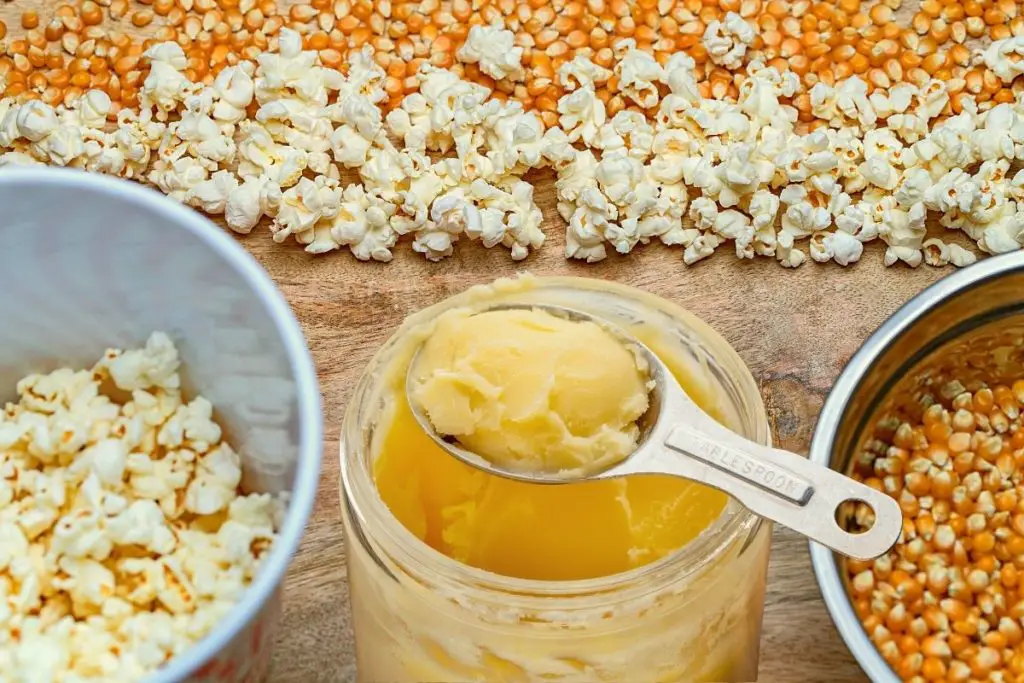
Granted, “need” may be a strong word—you can make popcorn without any fat; if so you’d prefer. However, in my opinion, if you want that delicious, melt-in-your-mouth popcorn experience, butter is the way to go.
But the trick is that your regular butter may not be the best choice if you want a genuinely crisp popcorn that doesn’t get soggy.
You see, the best way to make popcorn with butter instead of oil is by melting the butter on the pan, adding the kernels, and heating until they pop. However, the problem is that regular butter has a low smoke point, which means that the odds are your butter will start to smoke or burn before all the kernels have popped.
The solution? Clarified butter. That clear yellow fat has milk solids and water content removed, leaving behind purified butterfat.
No milk solids mean that the butter won’t start to smoke while cooking and the lack of water means that popcorn left sitting won’t get soggy.
Top Tip: Although, store-bought ghee works just as well since it is essentially clarified butter; it is easy to make your own clarified butter and store it for cooking other foods also. Here is an easy way to clarify butter.
Remember To Add Salt To Your Popcorn—Very Fine Salt.
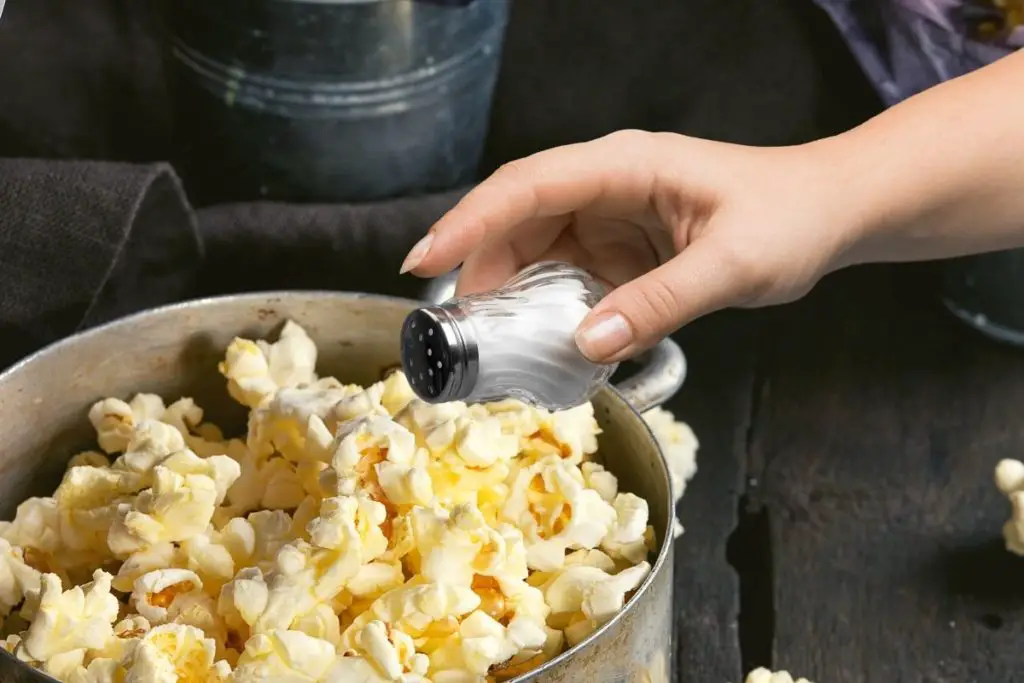
The charm of movie popcorn is that it has the perfect amount of salt in every kernel, without the salt dropping to the bottom of the bowl or big chunks of salt sticking to one area more than the other.
Of course, maybe you don’t mind that! However, I always prefer to use sea salt and pulse it in the food processor for a bit. This turns salt grains into a fine powder that perfectly sticks to the buttery popcorn and distributes evenly.
Top Tip: Although it is easier to do with a food processor, you can always grind it manually with a mortar or put salt inside a plastic bag and crush it manually with any item you have available in your kitchen.
Here Is How To Make Popcorn On Stove With Butter
Ingredients:
- ½ cup popcorn kernels.
- 3 to 4 tablespoons of clarified butter or ghee.
- Fine salt to taste.
Instructions:
- Place the clarified butter or ghee in a tall and heavy-bottomed pot over medium heat.
- After the butter melts, add a few kernels to the pan to test the temperature.
- Once the test kernels have popped, remove them from the pan and add the rest, making sure to distribute them evenly across the surface.
- To ensure even cooking, give the pot a gentle shake semi-regularly throughout the cooking process.
- Keep the lid slightly open to let the steam flow outside the pan so that popcorn won’t lose its crispness.
- Once the popping stops, remove from heat and immediately pour into a large bowl. Sprinkle the powdered salt on top and toss it to distribute evenly.
- Eat immediately or store in a sealed container once cooled.
If you’re looking for some new and exciting toppings to add to your popcorn, add some smoked paprika or nutritional yeast.
Spanish smoked paprika is a great way to add some spice to your popcorn. It has a smoky flavor that goes well with salty popcorn.
Nutritional yeast is a vegan-friendly way to add a cheesy and buttery flavor to your popcorn and is also a good source of vitamins and minerals.
In Summary
If you’re looking for a cheap, delicious, and healthy snack, look no further than buttery stovetop popcorn! This crispy snack is chemical-free and super munchable. Yes, air-popped popcorn is also healthy, but it would be dull and flavorless. That’s why stovetop popcorn bade with butter instead of oil is the best way to go.
